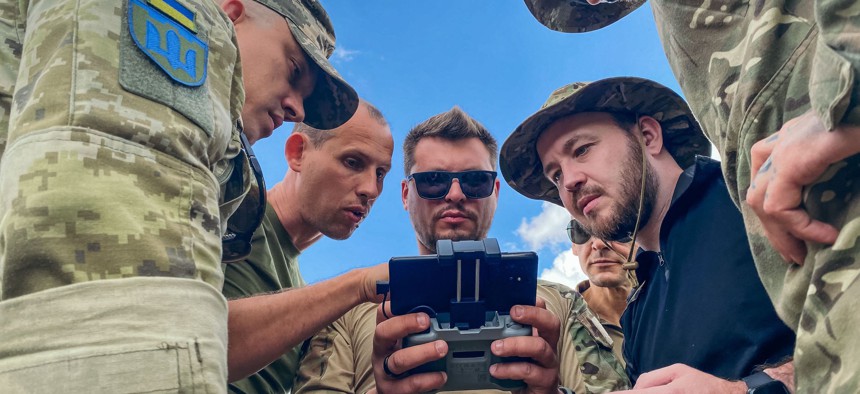MARCUS WEISGERBER

The war in Ukraine could alter the Pentagon’s future weapons buying plans, as military leaders look to better protect large, expensive equipment, the head of America’s second largest defense company said.
“What we're learning from the war in Ukraine is big, slow things are big, slow targets, whether it's warships or tanks,” Raytheon Technologies CEO Greg Hayes said in an interview Tuesday. “An asymmetric weapon can take out a multibillion dollar system.”
In Ukraine, both Ukrainian and Russian forces have used relatively cheap, modified commercial drones to drop explosives on military formations. Homemade weapons rigged with explosives were used by ISIS fighters in Iraq and Syria.
“I think this is going to cause us to rethink… some of the spending priorities in the next decade,” Hayes said.
He doesn’t expect these types of changes this year. Congress is reviewing the Pentagon’s fiscal 2023 budget request, and inside the Pentagon, officials are building a spending request for fiscal 2024. That annual budget request is typically sent to lawmakers in February; however, the Biden administration submitted its first two budgets late.
“I don't think you're gonna see that this year,” Hayes said. “But it's certainly in the thinking of the folks at DOD in terms of, OK, if they can kill one of my ships pretty easily with a missile, what do I do to protect that ship? Or what other technologies do I need? Or vehicles do I need that are less susceptible to these asymmetric attacks?”
Ukrainian forces have used shoulder-fired Stinger and Javelin missiles to destroy Russian tanks, armored vehicles, and combat aircraft. Raytheon makes Stingers, and makes the Javelin jointly with Lockheed Martin.
In recent years, the Pentagon has been reshaping its long-term spending to counter China’s weapon advances, following two decades of spending billions of dollars on weapons for battling insurgents in Afghanistan and Iraq. It’s developing new long-range bombers, hypersonic weapons, and satellite constellations. Defense officials have called Russia an “acute concern” that is accounted for in the military’s strategic planning.
After being elected in 2020, experts and analysts predicted the Biden administration would cut or flatten the defense budget after years of spending increases during the Trump administration. But both of Biden’s budget proposals have included increases in defense spending. Congress added tens of billions of dollars more to the 2022 request and is poised to do the same again this year in its review of the 2023 request.
“When President Biden was elected two years ago, I think we were all prepared for the inevitable cuts in defense spending,” Hayes said. “The fact is, we've seen anything but, because of all of the geopolitical events.”
No comments:
Post a Comment